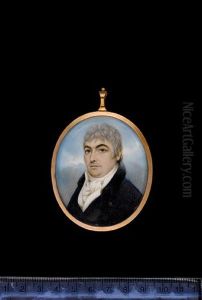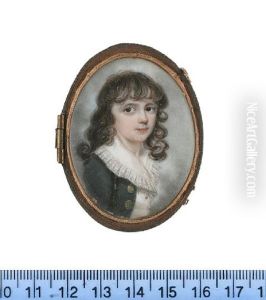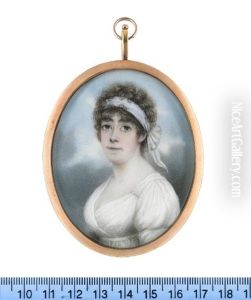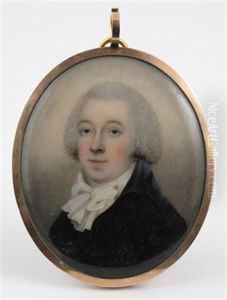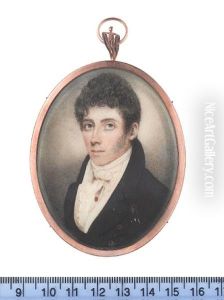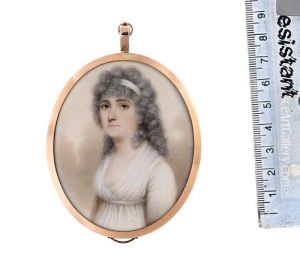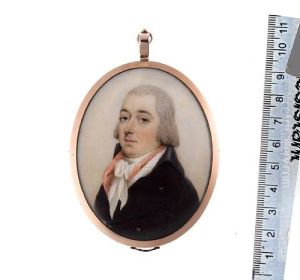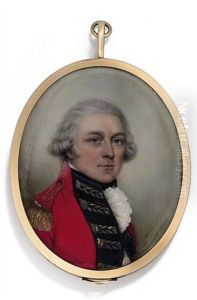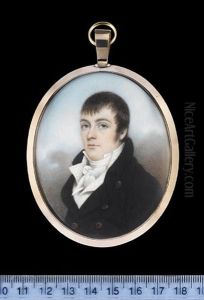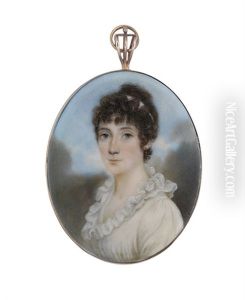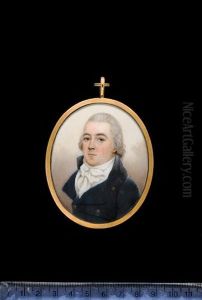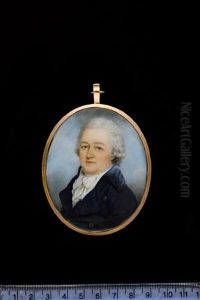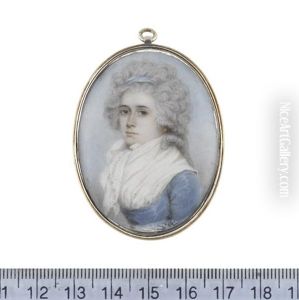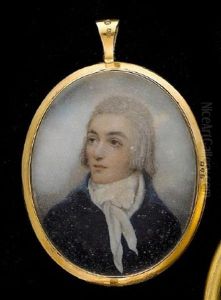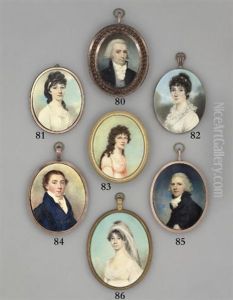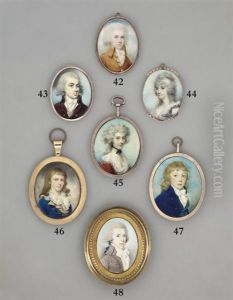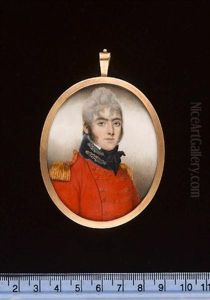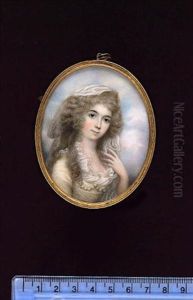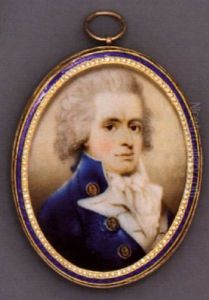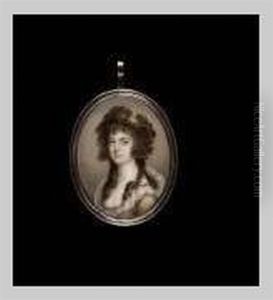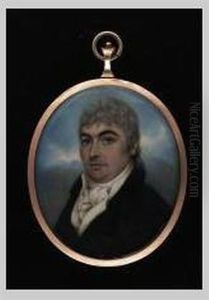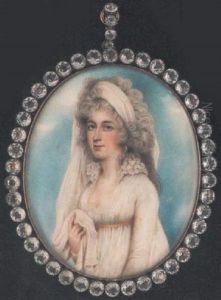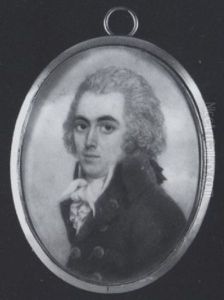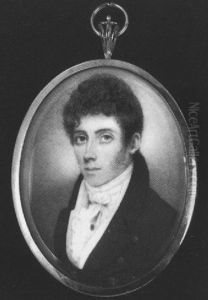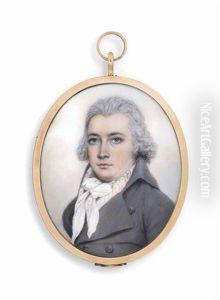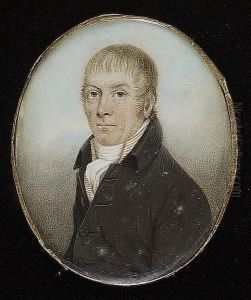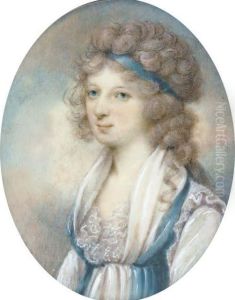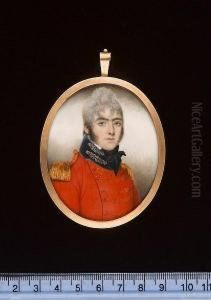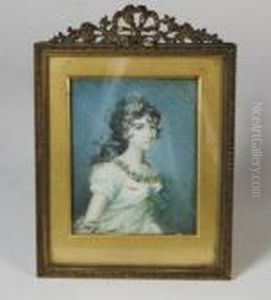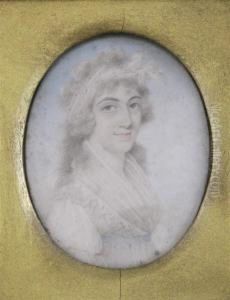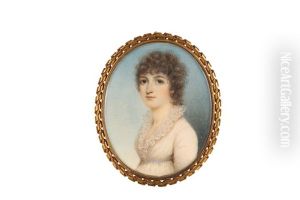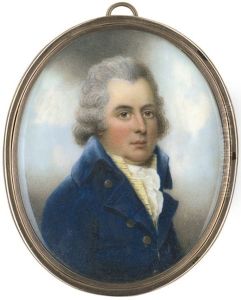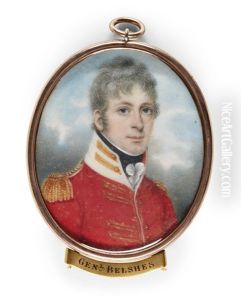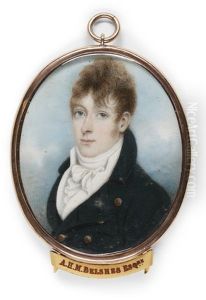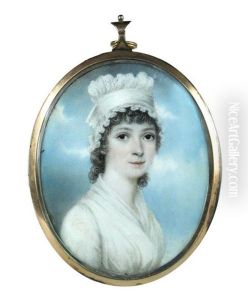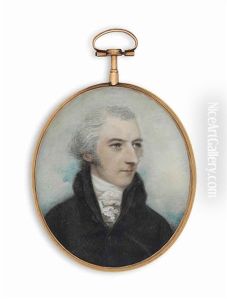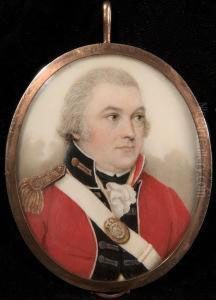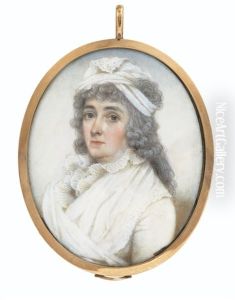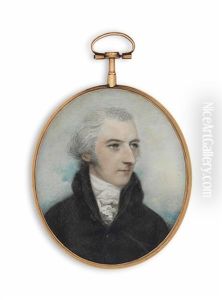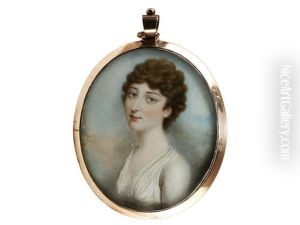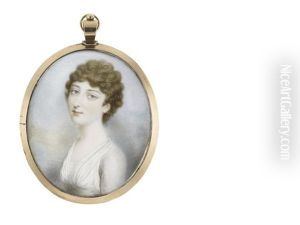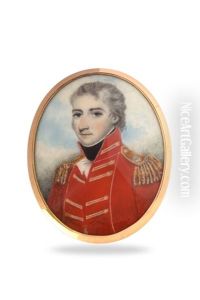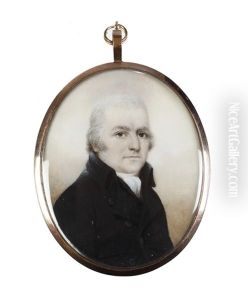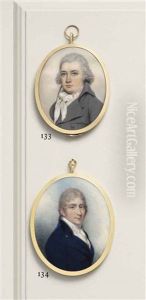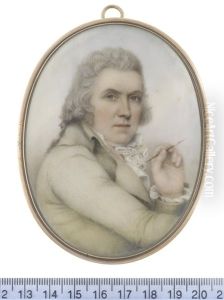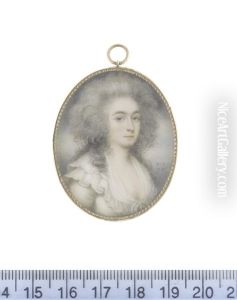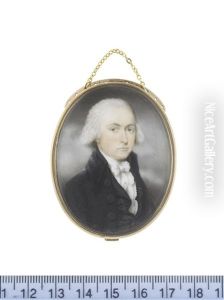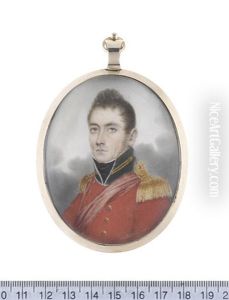Nathaniel Plimer Paintings
Nathaniel Plimer was an English miniature painter, born in 1757 near Wellington in Shropshire, England. He was the younger brother of Andrew Plimer, who was also a miniature painter. Nathaniel initially started working as an apprentice to a clockmaker, but this did not satisfy his artistic inclinations. Around 1777, he left his apprenticeship and ran away to London with his brother, where they joined a group of artists and found work in the studio of the renowned miniature painter Richard Cosway.
Cosway's influence was significant in Nathaniel's development as an artist. He absorbed the elegant and refined style of painting for which Cosway was famous. Nathaniel Plimer began to establish himself as a skilled painter of portrait miniatures, a popular art form during the late 18th and early 19th centuries, used for personal mementos or as portable portraits of loved ones.
By 1785, Nathaniel had left Cosway's studio to venture out on his own. He exhibited his work at the Royal Academy between 1787 and 1815 and developed a clientele that included members of the British aristocracy and gentry. His miniatures are known for their detailed and delicate brushwork, capturing the grace and character of his subjects with exquisite finesse. Plimer often painted on ivory, a common practice among miniature painters at the time, which allowed for smooth, fine details and a luminous quality to the portraits.
Despite operating in the shadow of his brother Andrew, who was considered the more prominent of the two, Nathaniel enjoyed his own success and recognition. His works are now collected and exhibited in art galleries and museums around the world, including the Victoria and Albert Museum in London and the Metropolitan Museum of Art in New York.
Nathaniel Plimer continued to work and paint until his death in 1822. His legacy as a miniature portraitist remains significant in the history of English art, particularly in the context of the late 18th and early 19th centuries, a period that saw a flourishing of this intimate art form.
